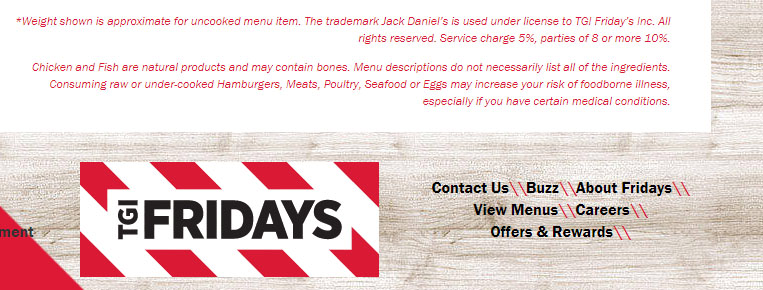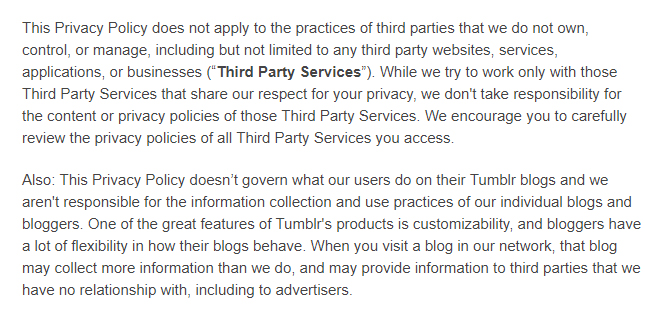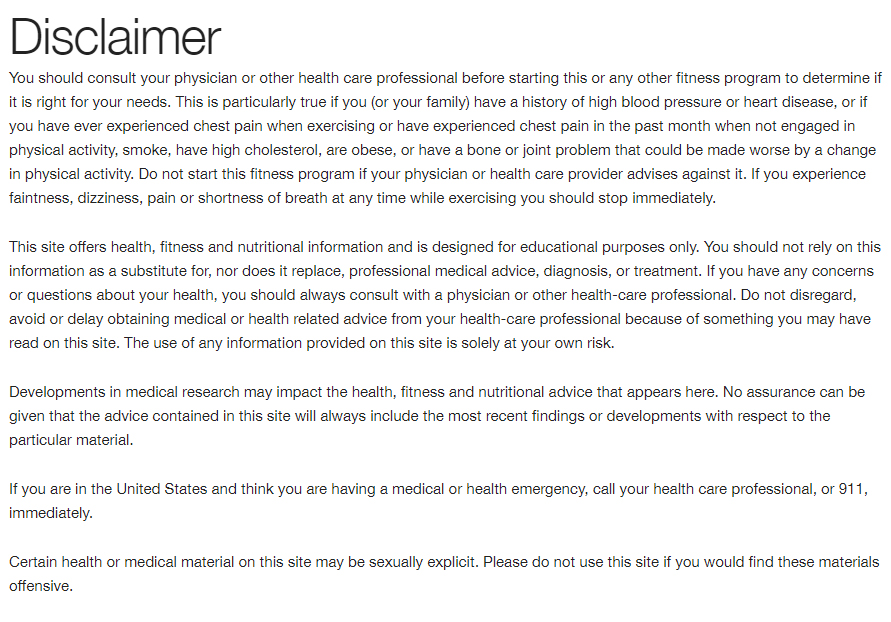Disclaimers for Websites and Apps
If you run a website or app, you'll likely need disclaimers.
Whether you collect consumer data, sell products, or host potentially objectionable content, disclaimers present an agreement and disclosure between you and your visitors.
What are legal disclaimers and how do you use them?
In this article we'll show you:
- What legal disclaimers are
- How to write a disclaimer
- Good examples of legals disclaimers
Keep reading to learn everything you need to know about legal disclaimers.
What Are Legal Disclaimers?
Legal disclaimers are statements that define, specify, or limit obligations in a relationship between two parties, including a business and its customers.
Disclaimers are applied in all kinds of cases and the text and meaning of the disclaimer depends on the nature of the relationship between the website/app and its users.
More importantly, the presence of a legal disclaimer doesn't mean it will be recognized or enforced in case one side of the relationship disputes it.
Example: How Disclaimers Work (or Don't)
If an author or filmmaker places a disclaimer on his work stating that all persons are fictitious, the artist might be protected from frivolous claims. However, the disclaimer doesn't stand up when a person is easily identified as being real.
Andrew Greene sued Paramount Pictures because he claimed he was defamed in the film The Wolf of Wall Street. Greene said that the character Nicky "Rugrat" Kiskoff was easily identifiable as him.
In the film, Rugrat was given a toupee and is depicted as a "criminal, drug user, degenerate, depraved, and devoid of any morals or ethics."
The defendants refuted the charge, saying that the character of Rugrat wasn't based on Greene alone but also on two other real people - Elliot Loewenstern and Gary Kaminsky. Still, Greene won the right to proceed with his lawsuit against Paramount to the tune of $50 million.
Greene didn't win the lawsuit, but the studio still spent a significant amount of time and resources on fighting the case.
More importantly, this case shows that a disclaimer won't do much to prevent fire if you're already fanning the flames or you irritate the wrong person.
History of Disclaimers
The history of disclaimers is a long and varied one that pre-dates the internet by far.
One of the simplest examples of a disclaimer is a "No Trespassing" sign posted on private property. These signs don't just warn visitors away from the property, but they also limit the landowner's liability if someone does enter the site and then breaks her leg.
Disclaimers pop up everywhere. Restaurant menus contain disclaimers that warn patrons of the dangers of raw fish and chicken bones:

Authors include disclaimers in their books to indemnify themselves from legal action threatened by readers or subjects of the book. Investment banks publish disclaimers saying they're not responsible for the risks involved with investing in the stock market.
In our litigious society, disclaimers are all but required. But they are more so required online because of the advent of data collection and storage. Governments attempt to protect citizens' data by forcing businesses to care for personally identifiable information properly. Doing so often requires using a Cookies disclaimer and Privacy Policy that lets visitors know what's happening with their personal information.
Is a Privacy Policy a Disclaimer?
A Privacy Policy is another important part of any app or website, but it isn't and doesn't replace a disclaimer.
Here's the difference:
A Privacy Policy breaks down the data you collect and how it's used. It builds a relationship by allowing customers to see what happens to their personal information before they provide any. Then, when they do become a member or a customer, they're doing so on a foundation of trust.
A disclaimer outlines the limitations of a relationship.
Disclaimers can be used in a Privacy Policy. If you use third party links on your site, you might add a disclaimer statement in your privacy policy that says you're not liable for how third parties use customer data, even if the customer visited the third party via your site.
Tumblr adds a disclaimer within its Privacy Policy to explain where the policy does and doesn't apply:

Here, you can see that Tumblr's Privacy Policy limits data use liability of Third Party Services or when members of Tumblr collect data on their own blogs.
In other words, Tumblr stands by the way it uses data, but users can't hold it responsible for the way sites they encounter through Tumblr - but who aren't related to Tumblr - use their data.
Examples of Disclaimers
Disclaimers are wide ranging, but each should be tailored to your individual website or app. We've rounded up a list of common disclaimers and excellent examples to help you get ideas flowing.
Offensive Content Disclaimers
An offensive content disclaimer warns visitors of the potential for offensive content while protecting the site itself from legal complaints.
These disclaimers can also be more versatile than a simple warning. Utah State University University Library created a content disclaimer that served several purposes:
- It warns of offensive content
- It explains why offensive content may be included
- It refutes the assertion that any offensive content reflects the views of the university
A disclaimer is a good example of how you can protect yourself when hosting content that is offensive, stereotyping or prejudicial without tarnishing your brand.
Affiliate Disclaimers
Affiliate disclaimers are mandated by the FTC and by many prominent affiliate programs including Amazon Associates.
If you use even one affiliate link, you will need an affiliate disclaimer. These disclaimers simply state that you stand to benefit financially when a visitor makes a purchase or visits a link you share on your website.
These disclaimers can be as simple or as thorough as you prefer.
Here's a good example from SwitchBack Travel, a site dedicated to reviewing all things outdoors:

Theirs is a simple disclaimer that meets FTC requirements. It's clear and conspicuous. It also fulfills Amazon requirements because it mentions the site's participation in the Amazon Associates program, which Amazon requires.
Incorrect Content Disclaimers
An incorrect content disclaimer is a good idea anytime your site appears to be providing advice or reporting on fact-based issues. These disclaimers are simple. They state that you're not responsible when or if something on your website is inaccurate.
Here's an example from Intertek:

Health Disclaimers
Health disclaimers are often legally required, particularly when you're working with regulated substances like prescriptions, tobacco, alcohol. They are also used when a product may pose another health risk, like exercise equipment that could cause injuries.
JR Cigars, a cigar e-retailer, includes a legal health disclaimer at the bottom of their main page. It notes that the adjectives used to describe cigars relate to taste and not to health threat.

The disclaimer warns customers that cigars are equally harmful and protects JR Cigars from customers who may experience illness as the result of smoking tobacco products.
Professional Advice Disclaimers
Some content may be construed as professional advice even when it comes from those who do not meet the legal requirements to be providing that advice.
Health and legal advice are two common types of regulated advice that require disclaimers, even if you're a lawyer or health care professional. Not only is it unwise for someone without a license to provide advice in these areas, but it may even be illegal and it certainly opens you up to liability.
Jillian Michaels is a popular fitness guru and celebrity who has appeared on numerous reality shows and has her own show. Her website is a popular site for information about diet and exercise, but she is not a healthcare professional. This means that the information she provides, while educational cannot be used as a substitute or replacement for professional medical advice.
Her disclaimer, which warrants its own page, says as much:

Her disclaimer has five key points:
- Don't use an exercise plan without asking your doctor, especially if you're sick
- Don't use the site as a replacement for a doctor. The information is provided at your own risk.
- Don't expect the site to provide the most up-to-date research or be medically accurate
- Always call 911 if it's an emergency
- Some material is sexually explicit, so don't use it if you find it to be offensive
Jillian's disclaimer is a good example because it's wide-ranging and covers the company legally on several fronts. It effectively means that the site can publish an article that misinterprets the most recent research, but the site isn't liable because the disclaimer says that there's "no assurance" that it will be up-to-date.
Conclusion
Legal disclaimers are used to protect both businesses and customers from the potential negative effects of products or practices. They've been used for years in simple forms like signs and are a standard part of internet use due to the rise of data capture and cookies.
A disclaimer won't save you if you've done something wrong, but they do alleviate liability generally and may protect you from frivolous lawsuits. These statements are also critical if you're working with regulated products or you're engaging in advertising because they keep you compliant with the law.
Disclaimers should be clear and conspicuous, particularly if you're dealing with regulated products. They can also be as simple or complex as you like - just make sure your disclaimer relates to your business.
Ultimately, disclaimers protect everyone and they build trust between your business and your customers.